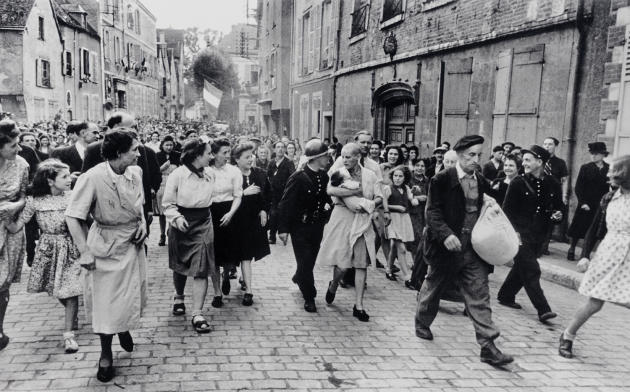The humiliation of women shaved in public places remains one of the worst insults of the Liberation. Historians estimate at 20,000 those who suffered this expeditious “justice”. Half of them were accused of “horizontal collaboration” – or having slept with Germans. The best known of these degrading scenes was photographed on August 16, 1944 in Chartres by Robert Capa, for the American magazine Life. A woman, her head shaved, her forehead marked with a swastika branded with a hot iron, hugs a baby and walks under the jeers of the crowd. The photo has changed over time into the clearest denunciation of this blind revenge, at the end of four years of occupation. It was later learned that the woman was called Simone Touseau and that she was 23 years old. She had had the child with a Wehrmacht soldier.
It is the fate of this character that Julie Héraclès, a native of Chartres, tried to interpret in the first person singular in her first novel, You don’t know anything about me (JC Lattès), which is released on August 23 and is already in several price selections. Courageous even perilous exercise to place oneself in the hated camp. Louis Malle, among others, tried it in 1974, in his film Lucien Lacombe, making a young militiaman its central character. He provoked the bronca of resistance associations, accusing him of legitimizing collaboration, and had to go into exile in the United States.
Witnesses today are rarer and less vehement. This void offers Julie Héraclès more scope to recreate the story of this woman, renamed Simone Grivise. She paints, in an alert style, the portrait of an impulsive upstart, driven by revenge, self-interest and the need for social revenge. This collaborator tossed about by events never seems to measure the scope of her actions. “A free woman with an incandescent temperament”, precise
the back cover of the book, with Capa’s photo as a banner.
A distorting mirror
To a large canvas of proven facts about Simone Touseau, the novelist adds invented elements, which change the perception of this woman. Simone Grivise has an abortion during the debacle, after having suffered rape and sexist and class contempt from a young man, Pierre. He abandons her to join the Resistance. She enters the collaboration out of a spirit of revenge (like Lucien by Louis Malle, for once a fictional character). Her mother is an alcoholic. Her childhood best friend is Jewish. Simone Grivise will try to help two children rejected by good Chartreuse society because of their yellow stars. She even saves a resistant. These imaginary additions create a distorting mirror that Julie Héraclès justifies: “I took a lot of liberties with the historical truth. I lacked elements to explore the personality of this woman, the motivations that pushed her to enter into the collaboration. Fiction allowed me to imagine the humiliations she may have suffered. »
You have 69.12% of this article left to read. The following is for subscribers only.
